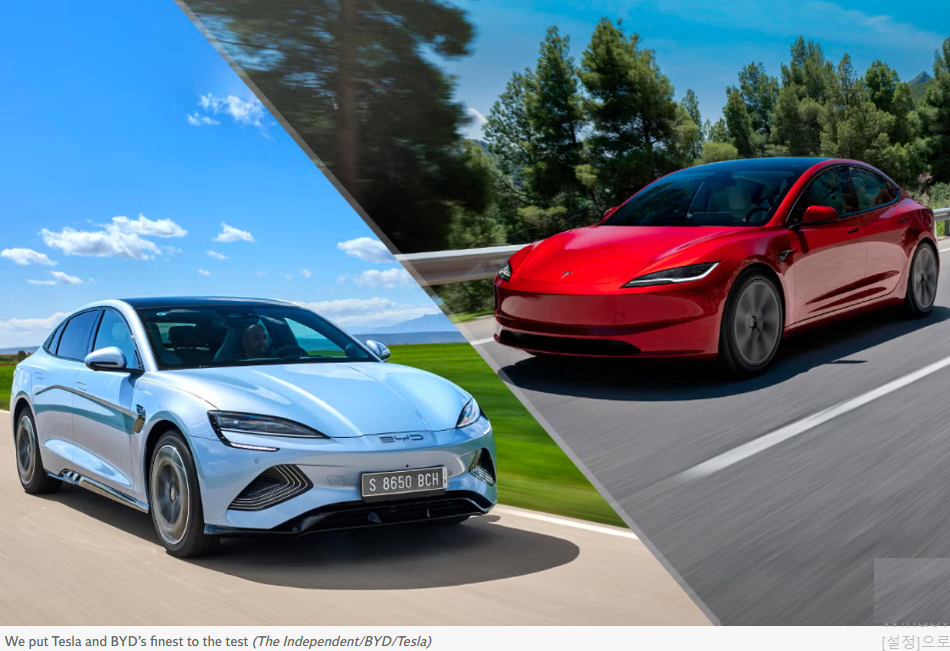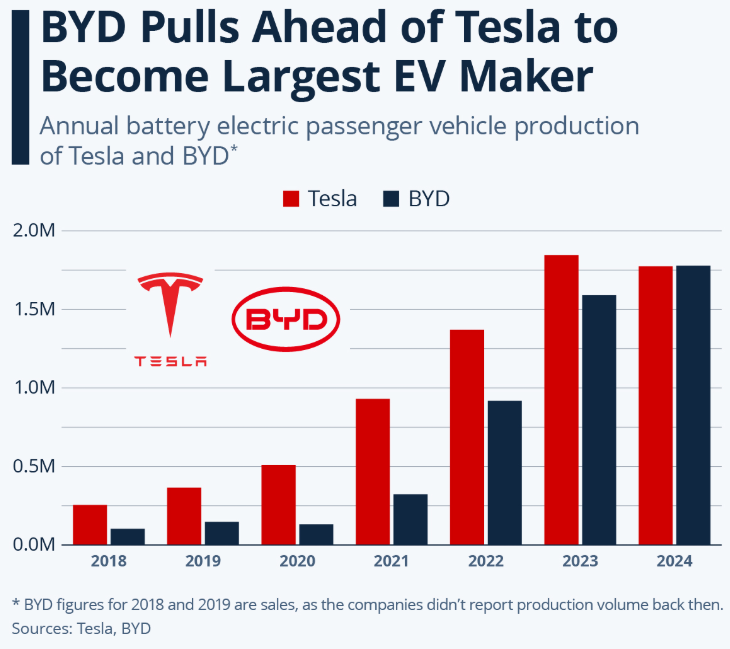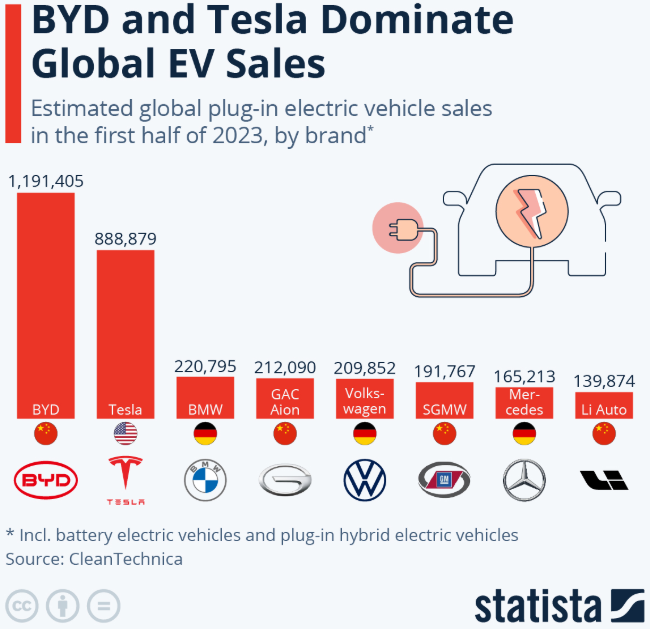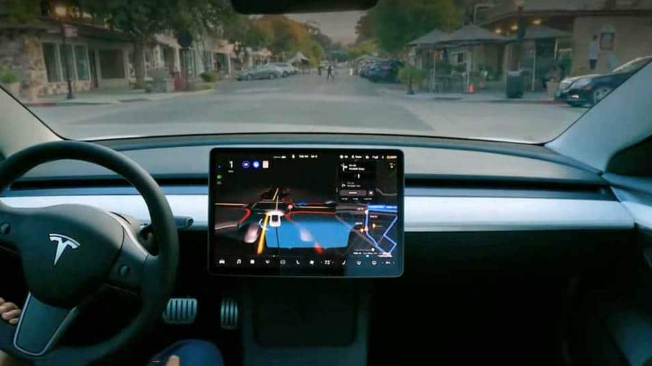
Tesla vs BYD – Discover the best EV investment strategies for 2025. Compare their business models, growth potential, and stock performance.
Tesla vs BYD – The battle between these EV giants is reshaping the global automotive landscape. As the leading electric vehicle manufacturers, both companies offer unique investment strategies and growth potential for 2025 . Despite both being dominant in the EV sector, their business models and investment strategies are fundamentally different. In this analysis, we’ll break down the key aspects of each company and provide insights into their investment potential.
1️⃣ Company Overview
When comparing Tesla vs BYD, investors should consider their different business models and growth strategies. According to CNBC, both Tesla and BYD are making waves in the EV market with distinct strategies
- Bloomberg: The Battle of EV Giants: Tesla vs BYD
- CNBC: Tesla vs BYD on CNBC

🔹 Tesla (NASDAQ: TSLA)
- Founded: 2003
- Headquarters: Palo Alto, California, USA
- Core Businesses: Electric Vehicles, Energy Storage, Autonomous Driving, Solar Energy
- Revenue (2024): Over $100 billion
- Market Cap: Approx. $800 billion
🔹 BYD (HKG: 1211)
- Founded: 1995
- Headquarters: Shenzhen, China
- Core Businesses: Electric Vehicles, Batteries, Public Transport Solutions
- Revenue (2024): Over $60 billion
- Market Cap: Approx. $120 billion
🚀 Quick Insight: Tesla positions itself as an innovation leader with a focus on premium markets, while BYD leverages mass production and cost efficiency to dominate the mainstream EV segment.
2️⃣ Business Model Comparison – Tesla vs. BYD
Tesla vs BYD is a hot topic in the EV investment space, as both companies dominate their respective markets.
| Aspect | Tesla | BYD |
|---|---|---|
| Production | In-house manufacturing, Gigafactories | Vertically integrated from batteries to EVs |
| Market Focus | Premium & luxury EVs | Mass-market & affordable EVs |
| Software | Full Self-Driving (FSD), OTA updates | Basic driver assistance, limited OTA |
| Energy | Solar panels, Powerwall batteries | Battery sales, energy storage solutions |
| Battery Tech | Lithium-ion, 4680 cells | Blade Battery (LFP technology) |
| Autonomy | Advanced FSD, Tesla Vision | Basic ADAS (Advanced Driver Assistance) |
| Revenue Streams | Car sales, software subscriptions, energy | Car sales, battery sales, public transport |
🚀 Key Takeaway: Tesla’s focus on premium innovation and autonomous driving contrasts with BYD’s cost-effective mass production and vertical integration.
3️⃣ Technological Innovations – Who’s Leading?
Understanding Tesla vs BYD investment strategies will help investors make informed decisions for 2025.

Tesla: Tech-Driven Innovation
- Full Self-Driving (FSD): Aims for complete autonomy with Tesla Vision and continuous OTA updates.
- 4680 Battery Cell: High energy density, reduced production costs, faster charging.
- Solar & Energy Storage: Integrating solar panels and Powerwall systems for sustainable energy solutions.
BYD: Practical and Affordable Innovation
- Blade Battery (LFP): High safety, long cycle life, and cost efficiency.
- Super Charging Technology: Can charge up to 470 km in just 5 minutes.
- God’s Eye Driver Assistance: Enhanced safety and convenience in mid-tier EVs.
🚀 Insight: Tesla leads in advanced software and premium battery technology, while BYD excels in practical and cost-efficient solutions for the mass market.
4️⃣ Financial Performance – Profitability and Growth
| Metric | Tesla (2024) | BYD (2024) |
|---|---|---|
| Revenue Growth | 35% YoY | 45% YoY |
| Gross Margin | 25% | 17% |
| Net Profit Margin | 15% | 8% |
| Cash Reserves | $20 billion | $10 billion |
| Debt-to-Equity Ratio | 0.4 | 0.6 |
🚀 Financial Insight: Tesla’s higher profit margins stem from premium pricing and software revenue, while BYD’s mass production strategy drives volume growth.

Tesla:
- Global EV Sales (2024): Approx. 920,000 units
- Key Markets: USA, Europe, China
- Sales Trend: Slowing growth due to increased competition in China.
BYD:
- Global EV Sales (2024): Approx. 4.3 million units
- Key Markets: China, Europe, South America
- Sales Trend: Rapid growth with a 41% increase YoY, driven by affordable pricing.
🚀 Market Insight: BYD’s ability to dominate the mass-market segment gives it an edge in terms of volume, while Tesla continues to hold strong in premium markets.
6️⃣ Investment Points & Risk Analysis

Tesla: Premium Innovation
Pros:
✅ Brand dominance and technological leadership
✅ High software revenue through FSD subscriptions
✅ Global expansion with multiple Gigafactories
Cons:
❌ High valuation (P/E ratio over 60)
❌ Regulatory risks related to autonomous driving
❌ Increasing competition from both US and Chinese EV makers
BYD: Cost Efficiency & Mass Production
Pros:
✅ Strong government support and policy alignment
✅ Low-cost production through vertical integration
✅ Diverse product portfolio from cars to buses and batteries
Cons:
❌ Lower profit margins compared to Tesla
❌ Dependence on Chinese market and policy risks
❌ Increasing global competition from brands like NIO and XPeng
7️⃣ Investment Strategy – Growth vs. Value

Tesla (TSLA)
- Strategy: Long-term growth investment
- Why: Innovation leadership and high-margin software sales
- Approach: Buy on dips and hold for long-term appreciation
BYD (1211)
- Strategy: Value and volume investment
- Why: Mass-market dominance and steady growth
- Approach: Diversified investment with focus on stable growth
8️⃣ Conclusion – Who Will Dominate the EV Market?
Both Tesla and BYD have established themselves as dominant EV players with contrasting approaches:
- Tesla: Innovation-driven with a focus on premium markets
- BYD: Mass production and affordability with a strong presence in China
💡 Final Thoughts:
- For aggressive growth, Tesla remains a top choice due to its cutting-edge technology and brand power.
- For steady volume growth and value investment, BYD offers reliable returns and solid fundamentals.
- Diversifying between the two companies could balance risk and reward.
🔍 Related Reading:
📢 Discover more investment strategies at BullBear Academy
📢 For more investment insights, check out our guide on Top 5 Investment Strategies for 2025.



